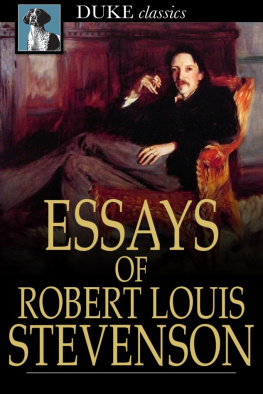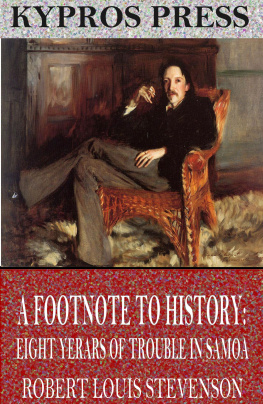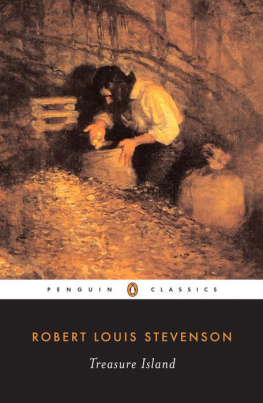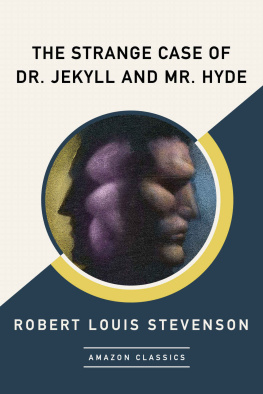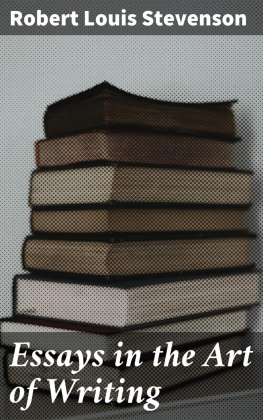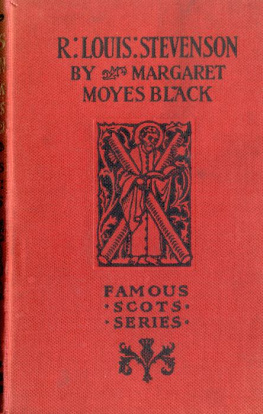ESSAYS OF ROBERT LOUIS STEVENSON
* * *
ROBERT LOUIS STEVENSON
*
Essays of Robert Louis Stevenson
From a 1906 edition
ISBN 978-1-62011-371-4
Duke Classics
2012 Duke Classics and its licensors. All rights reserved.
While every effort has been used to ensure the accuracy and reliability of the information contained in this edition, Duke Classics does not assume liability or responsibility for any errors or omissions in this book. Duke Classics does not accept responsibility for loss suffered as a result of reliance upon the accuracy or currency of information contained in this book.
Contents
*
Preface
*
The text of the following essays is taken from the Thistle Edition ofStevenson's Works, published by Charles Scribner's Sons, in NewYork. I have refrained from selecting any of Stevenson's formal essaysin literary criticism, and have chosen only those that, while rankingamong his masterpieces in style, reveal his personality, character,opinions, philosophy, and faith. In the Introduction, I haveendeavoured to be as brief as possible, merely giving a sketch of hislife, and indicating some of the more notable sides of his literaryachievement; pointing out also the literary school to which theseEssays belong. A lengthy critical Introduction to a book of this kindwould be an impertinence to the general reader, and a nuisance to ateacher. In the Notes, I have aimed at simple explanation and someextended literary comment. It is hoped that the general recognition ofStevenson as an English classic may make this volume useful in schooland college courses, while it is not too much like a textbook to repelthe average reader. I am indebted to Professor Catterall of Cornelland to Professor Cross of Yale, and to my brother the Rev. Dryden W.Phelps, for some assistance in locating references.
W.L.P., YALE UNIVERSITY, 13 February 1906.
Introduction
*
I - LIFE OF STEVENSON
Robert Louis Stevenson was born at Edinburgh on the 13 November1850. His father, Thomas, and his grandfather, Robert, were bothdistinguished light-house engineers; and the maternal grandfather,Balfour, was a Professor of Moral Philosophy, who lived to be ninetyyears old. There was, therefore, a combination of Lux et Veritas inthe blood of young Louis Stevenson, which in Dr. Jekyll and Mr. Hydetook the form of a luminous portrayal of a great moral idea.
In the language of Pope, Stevenson's life was a long disease. Even asa child, his weak lungs caused great anxiety to all the family excepthimself; but although Death loves a shining mark, it took over fortyyears of continuous practice for the grim archer to send the blackarrow home. It is perhaps fortunate for English literature that hishealth was no better; for the boy craved an active life, and woulddoubtless have become an engineer. He made a brave attempt to pursuethis calling, but it was soon evident that his constitution made itimpossible. After desultory schooling, and an immense amount ofgeneral reading, he entered the University of Edinburgh, and thentried the study of law. Although the thought of this profession becamemore and more repugnant, and finally intolerable, he passed his finalexaminations satisfactorily. This was in 1875.
He had already begun a series of excursions to the south of France andother places, in search of a climate more favorable to his incipientmalady; and every return to Edinburgh proved more and moreconclusively that he could not live in Scotch mists. He had made theacquaintance of a number of literary men, and he was consumed with aburning ambition to become a writer. Like Ibsen's Master-Builder,there was a troll in his blood, which drew him away to the continenton inland voyages with a canoe and lonely tramps with a donkey; thesegave him material for books full of brilliant pictures, shrewdobservations, and irrepressible humour. He contributed variousarticles to magazines, which were immediately recognised by criticslike Leslie Stephen as bearing the unmistakable mark of literarygenius; but they attracted almost no attention from the generalreading public, and their author had only the consciousness of goodwork for his reward. In 1880 he was married.
Stevenson's first successful work was Treasure Island, which waspublished in book form in 1883, and has already become a classic. Thisdid not, however, bring him either a good income or general fame. Hisgreat reputation dates from the publication of the Strange Case ofDr. Jekyll and Mr. Hyde, which appeared in 1886. That work had aninstant and unqualified success, especially in America, and made itsauthor's name known to the whole English-speaking world. Kidnappedwas published the same year, and another masterpiece, The Master ofBallantrae, in 1889.
After various experiments with different climates, including that ofSwitzerland, Stevenson sailed for America in August 1887. The winterof 1887-88 he spent at Saranac Lake, under the care of Dr. Trudeau,who became one of his best friends. In 1890 he settled at Samoa in thePacific. Here he entered upon a career of intense literary activity,and yet found time to take an active part in the politics of theisland, and to give valuable assistance in internal improvements.
The end came suddenly, exactly as he would have wished it, andprecisely as he had unconsciously predicted in the last radiant,triumphant sentences of his great essay, Aes Triplex. He had been atwork on a novel, St. Ives, one of his poorer efforts, and whosecomposition grew steadily more and more distasteful, until he foundthat he was actually writing against the grain. He threw this asideimpatiently, and with extraordinary energy and enthusiasm began a newstory, Weir of Hermiston, which would undoubtedly have been hismasterpiece, had he lived to complete it. In luminosity of style, innobleness of conception, in the almost infallible choice of words,this astonishing fragment easily takes first place in Stevenson'sproductions. At the end of a day spent in almost feverish dictation,the third of December 1894, he suddenly fainted, and died withoutregaining consciousness. "Death had not been suffered to take so muchas an illusion from his heart. In the hot-fit of life, a-tiptoe on thehighest point of being, he passed at a bound on to the other side. Thenoise of the mallet and chisel was scarcely quenched, the trumpetswere hardly done blowing, when, trailing with him clouds of glory,this happy-starred, full-blooded spirit shot into the spiritual land."
He was buried at the summit of a mountain, the body being carried onthe shoulders of faithful Samoans, who might have sung Browning'snoble hymn,
"Let us begin and carry up this corpse,
Singing together!
Leave we the common crofts, the vulgar thorpes
Each in its tether
Sleeping safe on the bosom of the plain...
That's the appropriate country; there, man's thought,
Rarer, intenser,
Self-gathered for an outbreak, as it ought,
Chafes in the censer.
Leave we the unlettered plain its herd and crop;
Seek we sepulture
On a tall mountain...
Thither our path lies; wind we up the heights:
Wait ye the warning!
Our low life was the level's and the night's;
He's for the morning.
Step to a tune, square chests, erect each head,
'Ware the beholders!
This is our master, famous, calm and dead,
Borne on our shoulders...
Herehere's his place, where meteors shoot clouds form,
Lightnings are loosened,

